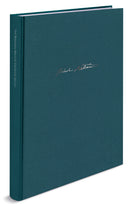| 作曲者 | Bohuslav Martinů (1890-1959)・ボフスラフ・マルティヌー |
| タイトル | Les Fresques de Piero della Francesca H 352 / The Parables H 367 |
| 出版社 | Bärenreiter・ベーレンライター |
| シリーズ名 | The Bohuslav Martinu Complete Edition II/2/7 |
| 品番 | 979-0260109582 |
| 校訂者 | Arne Stollberg・Janina Müller |
| 言語 | 英語・チェコ語 |
| 形状 | XXXVI, 263 ページ・33 x 26.5 cm・1639 g・布装丁 |
| 出版番号 | BA 10582-01 |
| ISMN | 979-0260109582 |
| その他 | Foreword (En/Cz) with new findings about the genesis of both works. |
“The Frescoes of Piero della Francesca” and “The Parables” represent the culmination of the late Neo-Impressionist orchestral output of Bohuslav Martinu, marked by a fantastic, kaleidoscopic style. Martinu transforms his extramusical (visual, literary) inspirations into the principles of musical forms, which are open to associations from mood setting to philosophical inquiries into the essence of human existence.
The composer wrote “The Frescoes” in spring 1955 and conceived them after the cycle of Renaissance frescoes of Piero della Francesca in the Basilica of St Francis of Assisi in Arezzo, Italy. The premiere at the Salzburg Festival on 26 August 1956 was performed by the Vienna Philharmonic under Rafael Kubelík, to whom the composition is dedicated. Martinu wrote the first two movements of “The Parables” in July 1957; he returned to the work after a break in early 1958 (completing the final, third movement on 8 February). “The Parables” were premiered in Boston on 13 February 1959 by Charles Munch and the Boston Symphony Orchestra.
The mottos of the first two movements of “The Parables” reference “The Wisdom of the Sands” by Antoine de Saint-Exupéry. For the third movement, Martinu created a motto out of loosely strung excerpts from Georges Neveux’s play “The Voyage of Theseus”, which later provided the subject matter for Martinu’s opera “Ariadne” (1958). Although the music of “The Parables” relates to the mottos only abstractly or, in the case of the third movement, perhaps somewhat accidentally, these texts are nevertheless an integral part of “The Parables”.
This volume of the complete edition is based on a thorough assessment of all of the composer’s autographs and their copies, as well as Martinu’s extensive correspondence, which is the source of numerous new findings regarding the genesis of both compositions. The editors included this information in the Foreword, which also examines the mottos of “The Parables” in the context of the composer’s late works.
· Facsimiles/Faksimile
· Les Fresques de Piero della Francesca, H 352
· I Andante poco moderato
· II Adagio
· III Poco allegro
· The Parables, H 367
· I The Parable of a Sculpture
· II The Parable of a Garden
· III The Parable of a Labyrinth
· Critical Report
· Kritická zpráva
· List of Alternative Readings and Individual Comments



